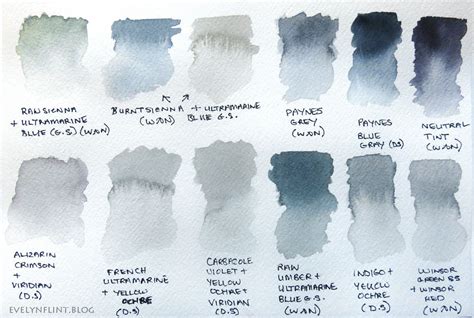How To Make Grey With Watercolor
Ronan Farrow
Mar 25, 2025 · 3 min read

Table of Contents
How to Make Grey with Watercolor: A Beginner's Guide to Mixing the Perfect Shade
Mixing the perfect grey with watercolors can feel tricky, but it's a skill easily mastered with a little practice and understanding. This guide will walk you through various methods, helping you achieve different shades of grey, from light and airy to deep and dramatic. Mastering grey mixing opens up a whole new world of subtle shading and atmospheric effects in your watercolor paintings.
Understanding the Basics of Mixing Grey
Before diving into techniques, let's establish a fundamental principle: grey is not simply the absence of color; it's a carefully balanced mixture of colors. The beauty of watercolor lies in its transparency; therefore, layering and adjusting the water-to-paint ratio is key to successful grey mixing.
Primary Colors for Grey:
The most common approach is using your primary colors – red, yellow, and blue. However, the specific shades of your primaries will significantly impact the resulting grey. A warm red will produce a warmer grey, while a cool blue will lean towards a cooler tone.
Methods for Mixing Grey Watercolor
Here are several methods to create stunning greys, catering to different preferences and desired effects:
Method 1: The Classic Red, Yellow, and Blue Mix
This method offers a versatile approach. Mix equal parts of your red, yellow, and blue watercolors. The ratio is crucial. Start with tiny amounts of each color and gradually add more until you reach your desired shade. Experiment to discover how different pigment brands react.
Tips for Success:
- Use a limited palette: Start with a cool blue (like Prussian Blue or Ultramarine) and a warm red (like Cadmium Red or Alizarin Crimson). This helps control the undertones of your grey.
- Adjust the water ratio: Too much water will result in a weak, pale grey. Too little will create a muddy, opaque tone.
Method 2: Using Complementary Colors
Complementary colors, found opposite each other on the color wheel, create a muted grey when mixed. For example:
- Mixing blue and orange: This yields a striking, slightly blue-toned grey. Experiment with different oranges for various warm and cool effects.
- Mixing red and green: A similar effect is achieved by combining red and green, again resulting in an interesting grey with hints of the original hues.
Advantages: This often produces a more vibrant and nuanced grey compared to the traditional three-primary method.
Method 3: Introducing Black or Neutral Tint
While purists may shy away from adding black, a touch of black can dramatically deepen a grey. Similarly, a neutral tint (a pre-mixed grey) can expedite the process, but it limits your control over the undertones.
Method 4: Layering for Depth
Build depth and complexity in your greys by layering washes. Start with a light wash and gradually add darker layers to achieve a rich, multifaceted grey. Allow each layer to dry before applying the next.
Achieving Different Shades of Grey
The beauty of watercolor lies in its versatility. Adjust the techniques above to craft varied shades of grey:
- Light Grey: Use less pigment and more water.
- Dark Grey: Use more pigment and less water.
- Warm Grey: Emphasize warm colors like red and yellow in your mix.
- Cool Grey: Lean towards cool colors such as blue and green.
Practice Makes Perfect
Remember, mastering grey mixing takes practice. Don't be afraid to experiment and develop your own unique approach. Keep a dedicated sketchbook to document your experiments and note down successful color ratios. With time and practice, you'll effortlessly create the perfect shade of grey for your watercolor masterpieces.
Featured Posts
Also read the following articles
| Article Title | Date |
|---|---|
| How To Meditate On Gods Word Day And Night | Mar 25, 2025 |
| How To Remove Antenna Base | Mar 25, 2025 |
| How To Increase Chest Compression Fraction During A Code | Mar 25, 2025 |
| How To Prove Strangulation In Court | Mar 25, 2025 |
| How To Make Leather Stiffer | Mar 25, 2025 |
Latest Posts
Thank you for visiting our website which covers about How To Make Grey With Watercolor . We hope the information provided has been useful to you. Feel free to contact us if you have any questions or need further assistance. See you next time and don't miss to bookmark.
